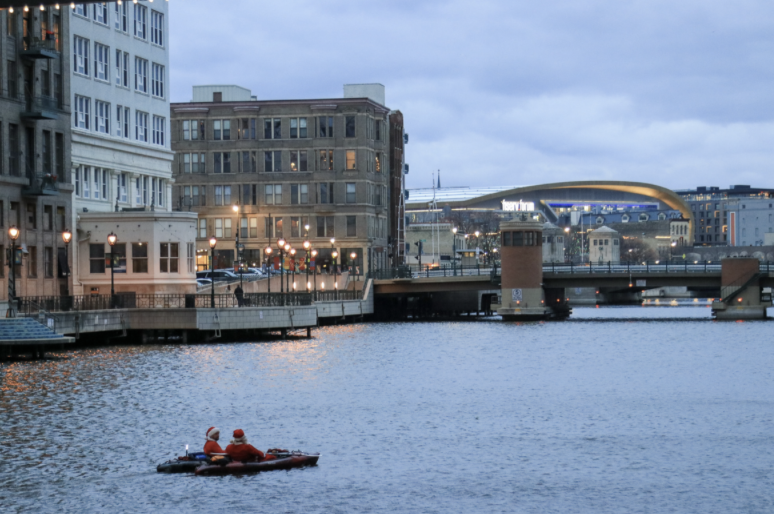
Standing tall on the corner of West Lincoln Avenue and South Sixth Street, St. Josaphat’s Basilica has been an icon of Milwaukee’s south side community for more than 100 years.
Modeled after St. Peter’s Basilica in Rome, St. Josaphat’s is a massive church known for its copper dome and beautiful interior, which features Italian Renaissance paintings and stained glass windows.
In 1896 the Reverend Wilhelm Grutza, along with many of the Polish immigrant parishioners, pioneered the construction project, according to the Basilica’s website. TW2
The church was built entirely by parishioners, and without much modern technology, said Susan Rabe, executive director of the Basilica Foundation. It was constructed completely of recycled materials from the old U.S. Post Office and Custom House in Chicago.
By the time of its 1901 dedication, St. Josaphat’s was the largest active church in Wisconsin with about 14,000 parishioners, Rabe said.
“It served as the central point for Polish, Catholic community at the turn of the 20th Century,” she said.
However, the church community had incurred a large amount of debt through construction.
In 1910, the Franciscans took on ownership and absorbed the debt — a figure equal to about $15-20 million in today’s dollars, according to Rabe. The debt was paid off in 15 years.
In 1929, Pope Pius XI declared St. Josaphat’s the third basilica in the United States, according to its website.
Today, the church is maintained by the Basilica foundation, which was formed in 1991 to raise money for a restoration project.
Since its establishment, the foundation has raised about $10 million, which has gone to help restore the inside and outside of the church, as well as complete the Pope John Paul II Pavilion and Visitor Center, said Rabe.
“Visitors from around the world come to see this church,” Rabe said. “It is not uncommon for people to cry when they first walk into the church.”
The Reverend Michael Glastetter, the pastor and rector of St. Josaphat’s, emphasized that it is still a living and breathing parish.
“It is a landmark church with great artistic beauty,” Glastetter said. “It was a spiritual home to polish immigrants back then, but now for all ethnic and social backgrounds.”
Glastetter has been the pastor since August and has a great sense of pride to be working at such a beautiful place.
“The beauty of the building is only exceeded by the faithfulness of the parish,” Glastetter said.
Regina Galassi, a senior in the College of Arts & Sciences, has been to the church a dozen times since her freshman year.
“The Liturgy at the Basilica is stunning,” Galassi said in an e-mail. “The beautiful and ornately decorated building … aids me in my prayer as I am reminded of the Divine all around me.”
Galassi said it is an important part of Milwaukee because of the rich Catholic and Polish traditions it upholds.
“The Church in Milwaukee has had a lasting impact on the history of the city, and the Basilica is a reminder of that influential tradition” Galassi said.
Galassi recommends that all Marquette students take a trip down to the Basilica.
“Visiting the Basilica is a taste of culture, similar to that of what you would find in Europe,” Galassi said. “Why not take the opportunity to expand your perspective and experience art and beauty in their finest?”









